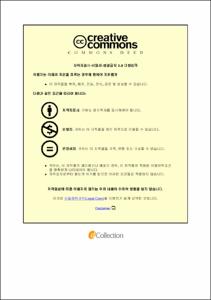Study on pathogenicity of Streptococcus parauberis in olive flounder, Paralichthys olivaceus
- Alternative Title
- 넙치, Paralichthys olivaceus에 대한 Streptococcus parauberis의 병원성 연구
- Abstract
- This study attempted to understand pathogenicity of Streptococcus parauberis by comparing genomes of five S. parauberis strains and global gene expression profiling of this pathogen exposed to olive flounder serum. In this study, serotyping of 75 S. paraberis strains was performed. Pathogenicity of 15 strains was evaluated in olive flounder by subcutaneous injection. Whole genome sequencing of three high and two low virulent strains was conducted using PacBio RSII (Pacific Biosciences) single-molecule real-time (SMRT) technology. Total RNA was extracted from samples of S. parauberis SPOF3K cultured in the serum and BHIB (+1% NaCl) for 1, 2 and 4 h. RNA sequencing was performed using Illumina hiseq 2500 platform, and differential gene expression was analyzed using Limma/Voom package. As a result, the genome of two strains of serotype Ia contained a 12 Kbp sized plasmid harboring tetracycline resistance and Internalin J gene, known as a virulence factor. Importantly, only serotype Ia strains were found to contain bacterial cellulose synthase, which would be of importance in bacterial biofilm formation and peptidoglycan O-acetyltransferase, which is reported to bring resistance against lysozyme. In our transcriptome analysis, in line with this, these genes were significantly up-regulated. Gene expression profiling showed fifteen important virulence- and nine stress-related genes significantly up-regulated in serum, indicating their crucial role in adapting hostile environment and in pathogenicity. In conclusion, our findings would provide a comprehensive view toward adaptive strategy and pathogenesis of S. parauberis, which would provide fundamental knowledge for further development of control measures in the future.
본 연구는 국내 어류양식의 대표 어종인 넙치, Paralichthys olivaceus의 주요 세균성 질병인 연쇄구균병의 원인체 Streptococcus parauberis의 전반적인 병원성을 이해하는 것을 목적으로 하였다. 본 연구는 S. parauberis의 감염기전 및 주요 병원성 인자를 탐색한 첫 보고이며, 추후 연쇄구균증에 대한 예방 및 관리에 기초 자료를 제공하고자 한다.
제 1장에서는 75개 균주에 대하여 혈청형 분석을 실시하였으며, 15개 S. parauberis 균주에 대한 병원성 시험을 통해 고 병원성 및 저 병원성 균주를 탐색하였다. 선정된 2개 고 병원성 균주와 1개 중간 병원성 균주, 2개 저 병원성 균주에 대하여 넙치 혈청에서의 생존능을 확인하였으며, 이들의 전유전체를 비교 분석하여 유전적 차이를 확인하였다.
혈청형 분석의 결과, 국내에서 혈청형 Ia 가 가장 우점적으로 분리된 것을 확인할 수 있었으며, 병원성 시험의 결과 이들의 병원성이 전반적으로 다른 혈청형에 비하여 높게 나타났다. 넙치 혈청에 5개 균주 모두가 저항성을 나타내었지만, 2개 고 병원성 균주가 더 강한 저항성을 나타내었다. 비교 전유전체 분석의 결과로 세 개의 유전형을 확인할 수 있었으며, 이는 혈청형 분석의 결과와 일치하였다. 유전형 I (혈청형 Ia) 균주는 공통적으로 Tetracycline 저항성 유전자 tetS와 병원성 유전자 inlJ를 포함하는 12 Kbp 크기의 plasmid를 가지는 것으로 확인되었고, Macrolide / lincosamide / Streptogramin 저항성 유전자 emrB과 Aminoglycoside 저항성 유전자 ANT(6)-Ia를 가지므로 다른 유전형들에 비하여 강한 항생제 저항성을 나타낼 수 있음을 확인하였다. Bacterial cellulose synthase, Lactocepin, Internalin J 및 Peptidoglycan O-acetyltransferase 등의 병원성 인자가 고 병원성 균주에서만 확인되었으며, 이들이 다른 저 병원성 유전형에 존재하지 않는다는 점에서 넙치에 고 병원성 S. parauberis 의 중요한 병원성 인자로 생각된다.
제 2장에서는 S. parauberis를 넙치 혈청에서의 전사체를 분석하여 감염 기전 및 생존 전략을 확인하고자 하였다. 이에 대한 결과로, 다양한 병원체에서 주요 병원성 인자로 보고된 병원성 유전자들과 스트레스 저항 관련 유전자들의 유의적인 과 발현이 확인되었다. 뿐만 아니라, 제 1장에서 확인된 고 병원성 균주에만 존재하는 병원성 인자들의 과발현이 확인되어, 이 유전자들이 S. parauberis의 주요 병원성 인자임을 증명하는 중요한 자료가 될 수 있었다.
- Issued Date
- 2019
- Awarded Date
- 2019. 2
- Type
- Dissertation
- Publisher
- 부경대학교
- Alternative Author(s)
- Yoonhang Lee
- Affiliation
- 부경대학교 대학원
- Department
- 대학원 수산생명의학과
- Advisor
- 김도형
- Table Of Contents
- General Introduction 1
Chapter I. Identification of virulence factors of Streptococcus parauberis based on comparative genomic study 5
1. Introduction 6
2. Materials and methods 8
2.1. Bacteria and culture conditions 8
2.2. Bacterial serotyping 13
2.3. Pathogenicity test 14
2.3.1. Fish 14
2.3.2. Challenge test 15
2.4. Bacterial survival test in olive flounder serum 16
2.5. Comparative whole genome analysis 17
2.5.1. Genomic DNA preparation 17
2.5.2. Whole genome sequencing 18
2.5.3. Genome identification and phylogenomic analysis 19
2.5.4. Comparative genome analysis 21
2.6. Statistical analysis 24
3. Results 25
3.1. Bacterial serotyping 25
3.2. Pathogenicity test 29
3.3. Bacterial survival in olive flounder serum 31
3.4. Comparative genome analysis 33
3.4.1. General feature of genome sequences 33
3.4.2. Genome identification and phylogenomic analysis 38
3.4.3. Virulence factors 41
3.4.4. Antibiotic resistance genes 44
4. Discussion 47
5. Conclusion 62
Chapter II. Understanding survival strategy of Streptococcus parauberis with global transcriptome profiling 63
1. Introduction 64
2. Material and methods 66
2.1. Experimental design and culture conditions 66
2.2. RNA-sequencing 67
2.2.1. RNA isolation and cDNA library construction and sequencing 67
2.2.2. Sequence data processing and differential gene expression 68
2.3. Quantitative-Reverse Transcriptase PCR 69
2.3.1. cDNA preparation 69
2.3.2. Primers 69
2.3.3. Real-time PCR 71
2.4. Statistical analysis 71
3. Result and Discussion 72
3.1. Bacterial adaptation in olive flounder serum 72
3.2. Overview of transcriptome data 73
3.3. Functional profiling of RNA-seq data 77
3.4. Differentially gene expression 83
3.4.1. ATP-Binding Cassettes transporters with DGE 83
3.4.2. Stress responses and regulation 87
3.4.3. Important virulence-related genes with DGE 90
4. Conclusion 102
국문요약 105
감사의 글 108
References 109
- Degree
- Master
- Files in This Item:
-
-
Download
 Study on pathogenicity of Streptococcus parauberis in olive flounder, Paralichthys olivaceus.pdf
기타 데이터 / 2.53 MB / Adobe PDF
Study on pathogenicity of Streptococcus parauberis in olive flounder, Paralichthys olivaceus.pdf
기타 데이터 / 2.53 MB / Adobe PDF
-
Items in Repository are protected by copyright, with all rights reserved, unless otherwise indicated.